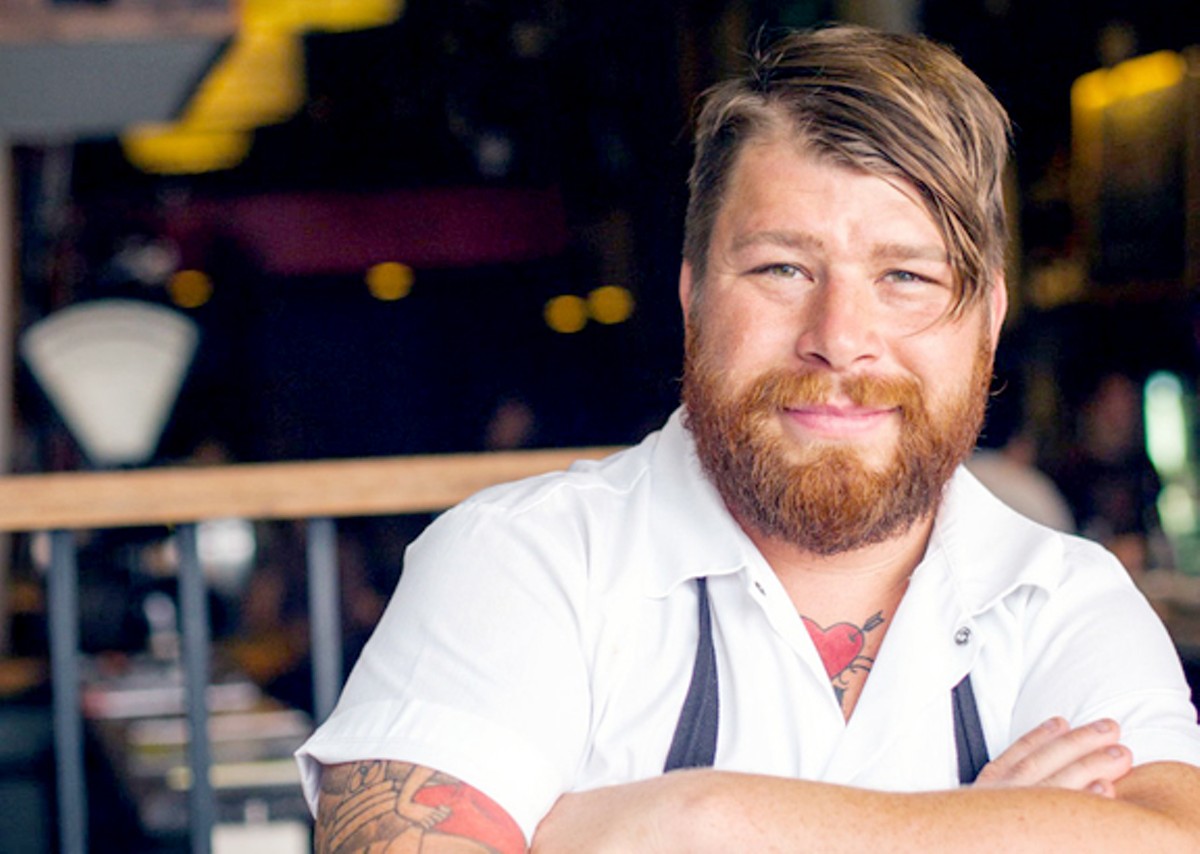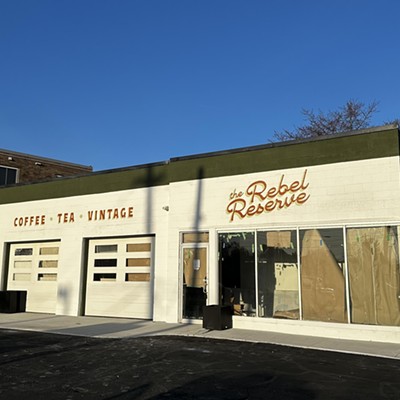When Jonathon Sawyer opened Trentina in University Circle, the concept was hailed as a game-changer for the Cleveland dining scene. The chef's ambitious tasting menu-only restaurant, which compelled diners to submit to a three-hour, 15-course parade of provisions, was unique not only for Northeast Ohio, but also the country, where only a handful of well-regarded chefs were successfully pulling off the feat.
But just a few weeks into the experiment it became clear that the model wasn't working – for the chefs, for the restaurant, and for the dining populace. Sawyer, like numerous chefs before him, was forced to make a very public change of course.
"I think it's a mid-major market thing," Sawyer says while sipping coffee on Trentina's attractive front patio. "If we had opened Trentina in San Francisco, it would still be Trentina, you know? In smaller markets like Nashville, Portland, Charleston, Cleveland, you only have three million people you can reach within an hour, so you have to adapt to the people, even if you don't want to."
Observe a chef-owner during the lead-up to opening day and you'll see a man or woman obsessed with details. From the menu to the stemware, every last facet of the operation is scrutinized, labored over, and reworked in the brain and on paper until it is just as it should be. But restaurants are like people, continually shifting to adapt to changing trends, times and technology.
Well, the successful ones anyway.
"I think it's change or die," says Jonathan Bennett, chef-partner at Moxie in Beachwood, which is in the process of executing its first major conceptual overhaul in years.
Very soon, diners at this 18-year-old East Side staple will begin to see a considerable transformation taking place on the pages of the menu. Gone is the small-, medium- and large-plate format that "confused diners" and attempted to coerce them into eating more than they wanted. It has been replaced by a more straightforward roster loaded with salads, sandwiches and entrees built around smaller portions of protein that allow the restaurant to reduce prices.
"The thought process behind it is that five to 10 years ago we ate out maybe two or three times a week as a general population," Bennett explains. "Today, we eat out six, seven or eight times a week, but our budget for eating out has not doubled or tripled along with it. You have to accept that you just can't have the menu price point that we used to have and expect to do 200 covers on a Wednesday night."
Whether he wanted to or not, Bennett changed the way he and his team have been doing things for almost 20 years because his customers changed the way they dine out. The restaurants that seem to last the longest are the ones that listen the closest to their clientele's wishes.
"You always had to listen to your customers, but nowadays even more so because everything seems to count more," notes Ricardo Sandoval, owner of the nearly 20-year-old Tremont mainstay Fat Cats. "Thanks to social media everybody has a voice now, so if they don't like something they are going to post it. If they do like something they are going to post a picture of it. In the old days you didn't have to worry about shit like that."
When he first opened Fat Cats, the menu read like pretty much every other contemporary Italian restaurant, where meals consisted of tortellini soup, steamed mussels with garlic sauce and huge plates of veal Parmesan. The only "vegetarian" dish around was the arugula and mozzarella salad. That's hardly the case these days.
"It used to be all about me and I made all of the decisions, and I never even thought about vegan, vegetarian or gluten-free dishes," he says. "Nowadays you have to listen to what your customers want and make a change."
It's not just the types of foods people eat these days that has changed, adds Sandoval, it's the way they eat. He recalls needing to gently remind diners of his restaurant's two-hour time policy, which aimed to free up the table for future diners. How positively genteel that sounds these days, he thinks.
"In the old days people would dine and die at the table," he says half-jokingly. "Now people are on their phones the whole time trying to decide on their next move."
The demand for quicker meals that still satisfy increasingly finicky diners has led to the proliferation of QSRs – or quick-serve restaurants, which offer highly customizable food in a fast-casual operation. That was precisely the format Bac Nguyen was banking on when he dreamt up Ninja City, his Asian-fusion version of Chipotle in University Circle. While he ended up tweaking the concept to include a full bar and service staff, his menu stuck with the build-your-own-bites format, with diners selecting everything from the base (banh mi, rice bowl or bun) and protein (chicken, pork, shrimp, tofu) to the veggies (pickled carrot, bean sprouts, jalapeno) and sauces (ginger soy, lime aioli, roasted peanut).
The result was a combination of chaos in the kitchen and remorse at the tables, reports Nguyen.
"People were making just horrible combinations, like putting spicy aioli on their noodles," he says.
The scene behind the swinging kitchen doors wasn't much prettier. Imagine a ticket for a table of four, with each diner getting two dishes, each with numerous variables, and you begin to get a sense of the bedlam that befell the cooks. A complete reformatting of the menu followed, one which replaced unfettered customization with more traditional entrees.
"Now we have more composed dishes where you just pick a protein, which makes the kitchen operate much smoother and guides customers towards combinations that make a lot more sense," Nguyen says.
Sawyer's Noodlecat restaurant has experienced similar tweaks and adjustments since opening four years ago, but the most dramatic one was saved for last. Long gone are the days when a diner had his or her a choice of nearly a dozen noodle soups, more than 30 add-ons, plus a roster of salads, starters, steam buns, sides and specials.
In a move that pushes Sawyer's noodle bar ever closer to fast-casual, the downtown restaurant recently unveiled a menu that dramatically limits options while still giving the diner a considerable measure of choice. The change was a sort of mea culpa from Sawyer, who at the time of opening believed the market was ready for his take on an authentic ramen shop.
"I thought because of the success of Greenhouse Tavern I could do the most Japanese-inspired, neo-Tokyo ramen shop," Sawyer explains. "I thought, let's do a slurp shop that takes Japanese street food seriously. That was a silly decision by me."
But for operators like Sawyer, Bennett, Sandoval, Nguyen and others, there exists a limit to how much a person will alter core beliefs to cater to public demand.
"The one thing I can't bend on is what we bring in the back door," Bennett says. "I cannot bring myself to buy something that I wouldn't want to serve to my friends. And with some of the labor crunches of the day, it's tempting, but my ego will not let me go there."
Sawyer refuses to budge on sourcing, too, saying that no amount of pressure will compel him to veer away from using the best quality local, sustainable and humanely raised products that he can track down. At some point it's no longer about dollars and cents; it's about common sense.
"Our decision-making process has nothing to do with anybody else but us," he says. "Is this something our kids will be proud of us for, is this something we can be proud of, will it help us to attract more talent, and will it get more people to come in our doors. That's our mentality."










